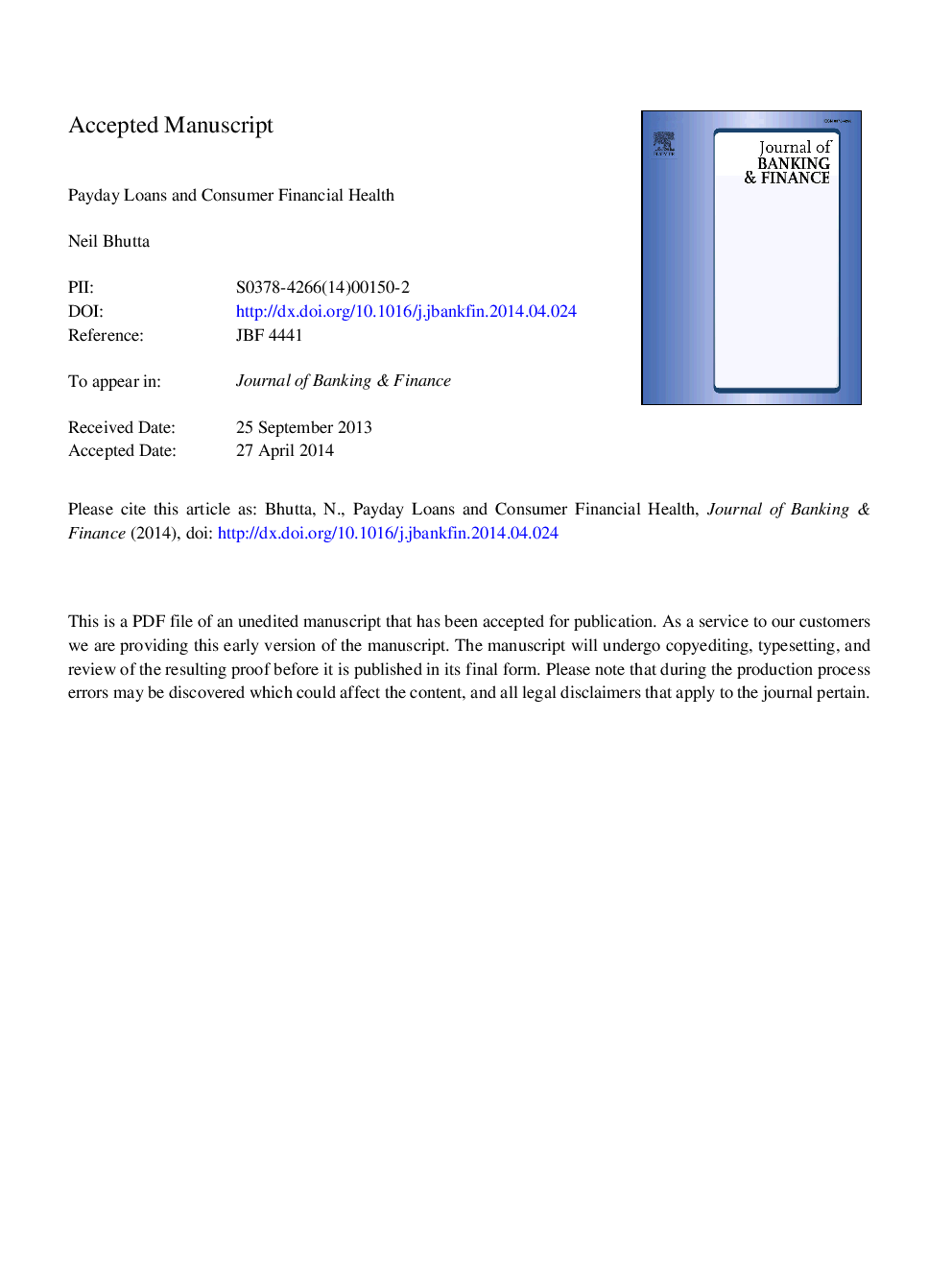| Article ID | Journal | Published Year | Pages | File Type |
|---|---|---|---|---|
| 5088997 | Journal of Banking & Finance | 2014 | 39 Pages |
Abstract
The annualized interest rate for a payday loan often exceeds 10 times that of a typical credit card, yet this market grew immensely in the 1990s and 2000s, elevating concerns about the risk payday loans pose to consumers and whether payday lenders target minority neighborhoods. This paper employs individual credit record data, and Census data on payday lender store locations, to assess these concerns. Taking advantage of several state law changes since 2006 and, following previous work, within-state-year differences in access arising from proximity to states that allow payday loans, I find little to no effect of payday loans on credit scores, new delinquencies, or the likelihood of overdrawing credit lines. The analysis also indicates that neighborhood racial composition has little influence on payday lender store locations conditional on income, wealth and demographic characteristics.
Related Topics
Social Sciences and Humanities
Economics, Econometrics and Finance
Economics and Econometrics
Authors
Neil Bhutta,
